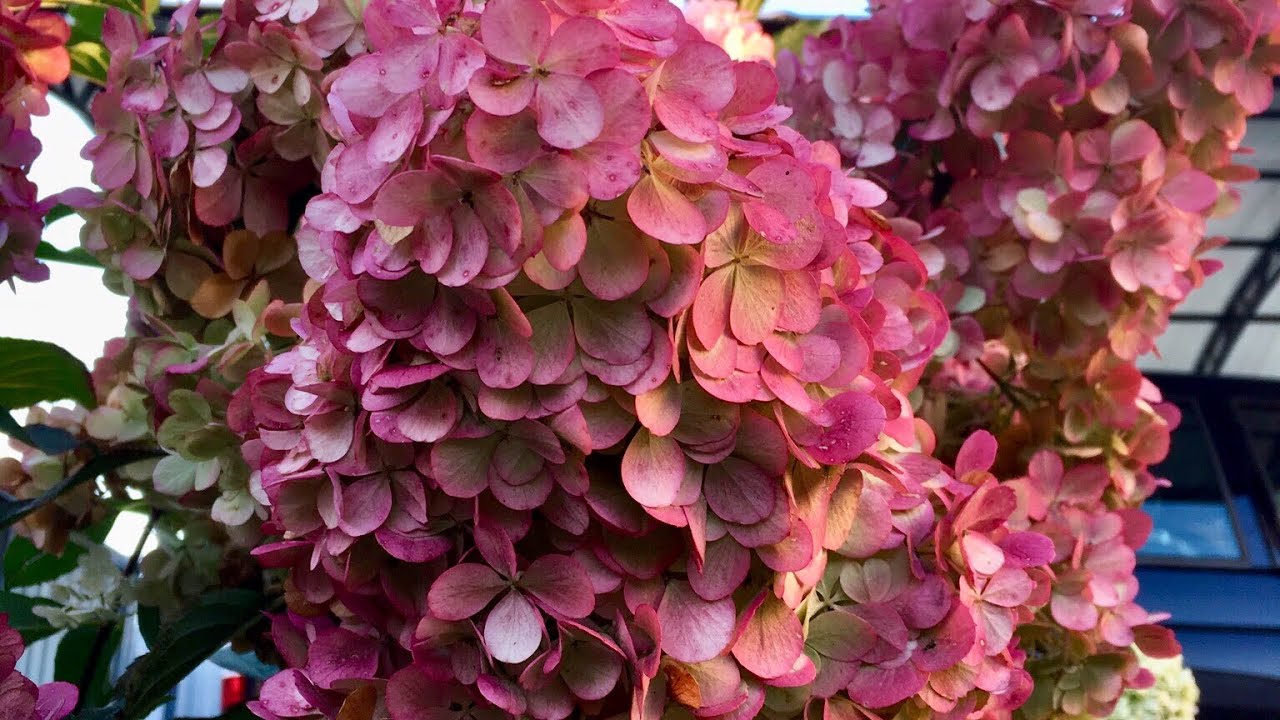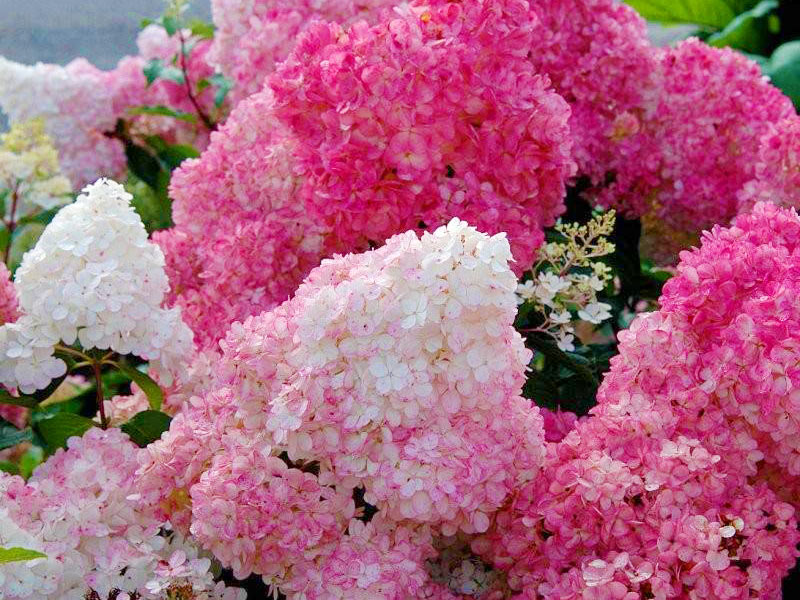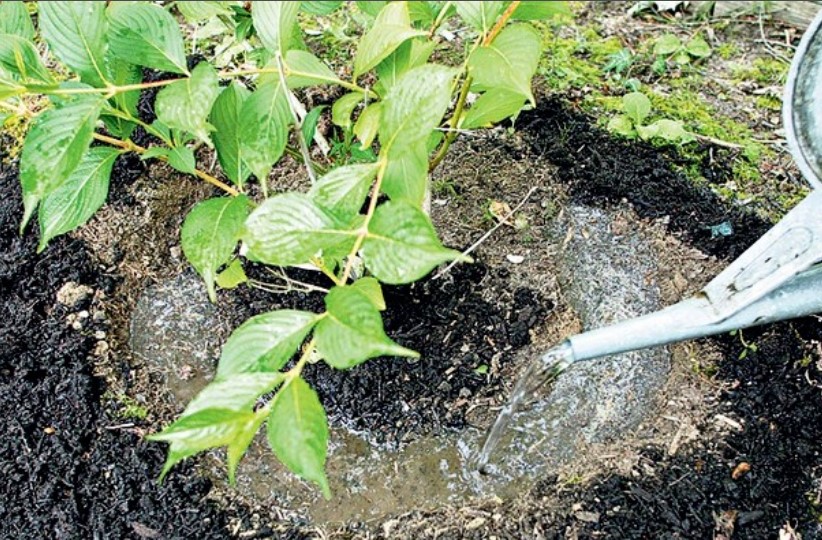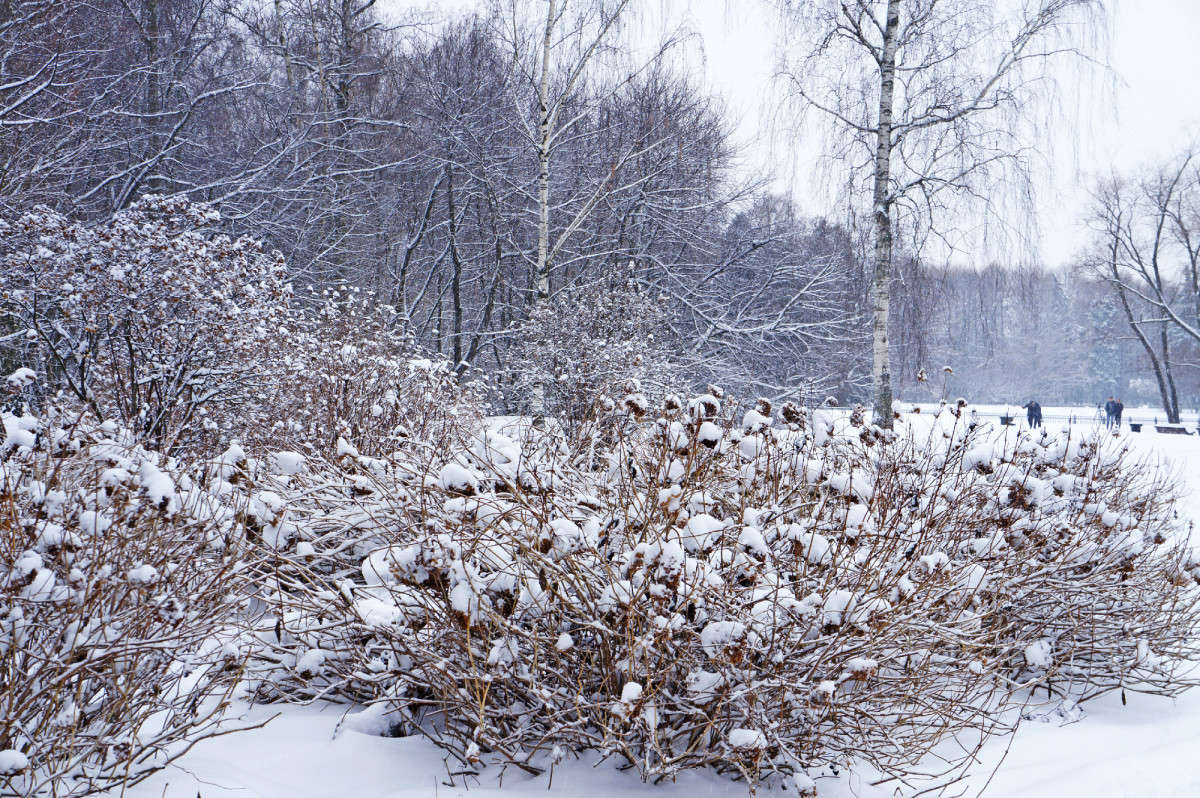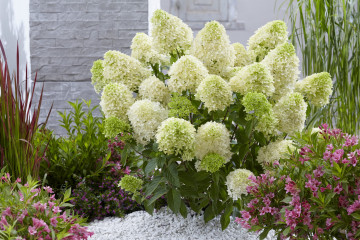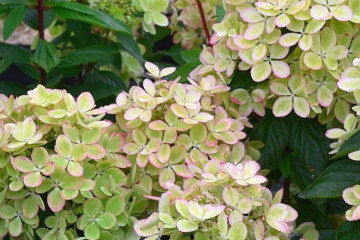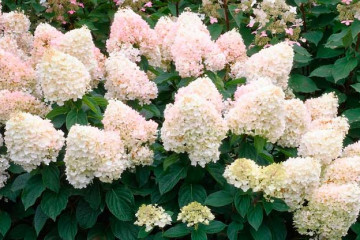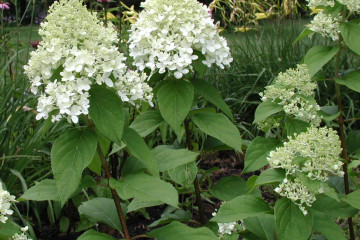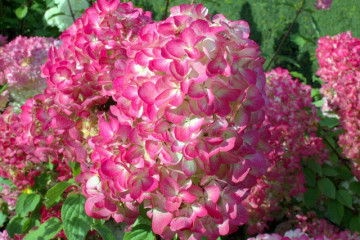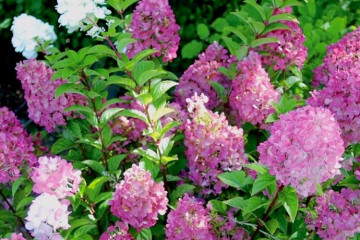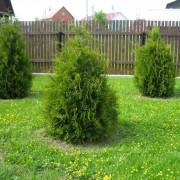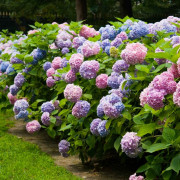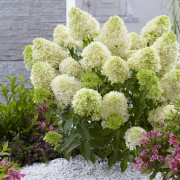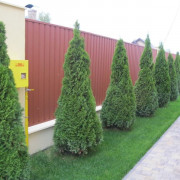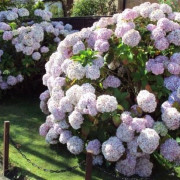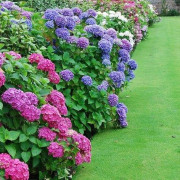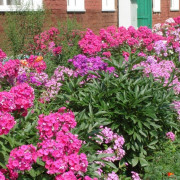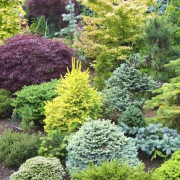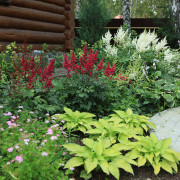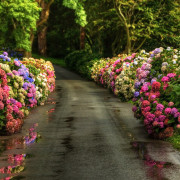Hydrangea Samarskaya Lydia (Hydrangea Paniculata Samarskya Lydia)
Content:
A variety of panicle hydrangea called Samara Lydia is a novelty, still little known, because gardeners only learned about it in 2018 at the "Festival of Flowers" exhibition in Samara. A short, compact shrub with lush inflorescences, suitable for open field and container cultivation.
Hydrangea paniculata (Hydrangea Paniculata Samarskya Lydia) - description
The variety belongs to the type of panicle hydrangea, which determines its most important characteristics:
- color change of inflorescences as the panicles open;
- simple vegetative propagation;
- compactness;
- resistance to low temperatures in winter;
- moisture-loving;
- susceptibility to formative pruning.
The origin and appearance of hydrangea Samara Lydia
For the first time, the flowering bush was presented to the Russian public on 08/25/2018 in the Samara garden center. Breeder Jean Reno was engaged in its breeding in the French nursery RENAULT. The variety is sold abroad under the trade name "Rensam". In 2018, it was patented in our country and in France.
Among the features and advantages of the variety:
- The bush is formed undersized, up to 1.3 m high, compact, slowly growing. Crown width up to 1.1 m.
- Suitable for growing in containers and tubs up to a maximum of 80 cm.
- The long flowering period is from July to October.
- The shoots are less brittle than those of other varieties, as they become lignified, they are covered with red bark.
- Leaves are dark green in color with a rough surface.
- Frost resistance - up to -35 ° С. Suitable for climatic zone IV.
It was this variety that was planted in the flowerbeds of the Samara Arena stadium before the FIFA World Cup. In 2019, the supply of seedlings was organized throughout Russia.
How the hydrangea Samara Lydia blooms
Each shoot of the new year ends with a cone-shaped (pyramidal) inflorescence up to 15 cm long. When blooming, the flowers are white, but gradually darken, turning first into pink, and at the end into a ruby-red color.
Large flowers are close to each other. The speed of color change depends on the illumination of the plant, top dressing, and the adequacy of watering. Numerous inflorescences give the bush a very elegant look, and since they do not bloom at the same time, then on one plant you can simultaneously see white, pink and red flowers.
Transplanting hydrangea Samarskaya Lydia after purchase in open ground
Since the shrub belongs to the IV climatic zone, nothing prevents it from wintering in open ground without shelter. Therefore, it is kept in tubs only if there is no free space for transplanting, but in this case it is important to ensure a cold wintering at a temperature not higher than +5 ° C.
What is needed for landing
All types of hydrangeas are sensitive to soil acidity. The optimum soil balance for the shrub is pH = 5.0. Otherwise, the composition of Samara Lydia is undemanding, but prefers loose soils, nutritious, capable of retaining moisture. To do this, humus and peat must be introduced into the soil before planting.
If you need to transplant a seedling bought in a nursery in a container, then May, all summer and September are suitable for this.If possible, it is best to plant hydrangeas in May, in which case it will be possible to admire the first flowers this summer.
Choosing the best place
The place is chosen near a shelter that will protect the branches from strong winds and the scorching midday sun. A wall of a house, a fence, a pergola will do. They plant near trees only if they have a transparent crown, for example, birches, aspen, alder. Additionally, the need for watering is taken into account. There should be a tank nearby for settling water, collecting rainwater, or another source.
Step-by-step planting process
For the Samarskaya Lydia variety, the following sequence is suitable:
- Dig a landing hole 50x50x50 cm.If several holes are needed, then a distance of 1.5 m is maintained between them.
- Broken brick or small pebbles are placed on the bottom for drainage.
- A day before planting, 1-2 buckets of water are poured into the pit.
- Fertile soil is harvested, to which 40-60 g of superphosphate is added.
- In order to avoid skewing of the shrub, a support with a height of at least 1.2 m is installed on the bottom, to which you need to tie the plant in the area of the root collar.
- The roots are lowered into a hole and covered with soil, moderately compacting so that the root collar is flush with the soil level.
- Water abundantly.
In the following days, at least every other day, the bush continues to be watered. Sprinkle mulch around the trunk so that it does not dry out too quickly.
Reproduction of hydrangea Samara Lydia
Planting material for the owners of at least one bush will always be at hand in unlimited quantities. According to the seedling growers, the variety does not produce seeds, but this is not a big deal, because all parts are suitable for vegetative propagation. Everyone chooses a suitable method for themselves.
Propagation by cuttings
May is the perfect time to harvest cuttings. At this time, it is recommended to carry out formative pruning in order to give the bush the necessary shape. Apical shoots, not yet lignified, with 2-3 pairs of leaves are ideal.
The lower pair of leaves is removed, and the subsequent ones are shortened to reduce the area of moisture evaporation. The crown is pinched, if there is a flower bud, it must be removed. The cut is dipped in a root formation stimulator. Next, the cutting is placed in water or soil. In the container, the cuttings must be covered with a transparent cap in order to achieve a greenhouse effect. The optimum temperature for germination is + 18-25 ° С.
Usually 2 weeks are enough for roots to appear in water and soil. After the cuttings are planted in pots to grow them until next spring.
A seedling with blossoming young foliage from a pot is planted in its permanent place in open ground in May.
Growing from cuttings
Layers are obtained from the lower shoots. They are bent to the soil and buried in a shallow depth. Young shoots should appear at the end of summer. A new bush is dug up and transplanted to its permanent place.
Dividing the bush
Bushes can be divided into several parts for propagation purposes. This is done in the spring, when the buds have not yet blossomed. From one bush, you can get 3-4 full-fledged seedlings.
Hydrangea care Samara Lydia
In leaving, the beauty does not cause much trouble. The main thing that she needs is attention, and also regular watering. For the greatest decorativeness, pruning is carried out.
Watering mode
It is difficult to compare hydrangea with other ornamental shrubs in terms of the degree of moisture-loving. From spring to autumn, she needs moist soil. Water as needed, but at least 1 time per week, pouring 3-4 buckets of water under each plant.
Top dressing
To make the shoots stronger, once a month the hydrangea is watered with a slightly pink solution of potassium permanganate.For nutrition, a mullein solution is suitable, which is applied 2-3 times per season. When budding, a solution of urea and potassium sulfate is useful (1 tablespoon per 10-liter bucket of water). When tying buds, fertilize with superphosphate (1 tablespoon per 10-liter bucket of water).
Features of care during the flowering period
Removing wilted inflorescences is very important. This stimulates the forcing of new buds and refines the appearance of the bush.
Features of care during the rest period
At this time, formative pruning is carried out. It is necessary to cut out all the shoots growing inside the crown, broken branches, untidy processes. It is useful to refresh the mulch at the roots and loosen the soil to a depth of no more than 5 cm.
Preparing for winter
Hydrangeas have excellent winter hardiness. Shelter is not required, but if cold hurricanes are raging in a given area, then the crown is tied with burlap, on top of which the first snow that falls is thrown.
It is a well-known fact that those who have started a hydrangea on the site constantly want to plant new, even more beautiful varieties. Hydrangea Lydia is a novelty that will delight experienced and novice gardeners who want to decorate their plot with ornamental shrubs.
